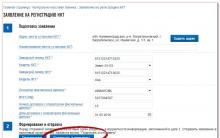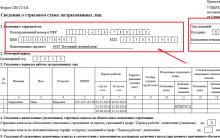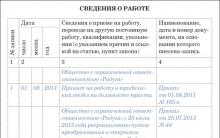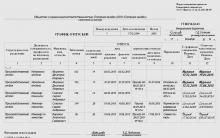Since 2008, the state has obliged all enterprises to report to the Federal Tax Service on the average number of their staff. The compilation and delivery of information raises many questions in practice.
Since the report is submitted on a strict form, the Federal Tax Service has developed recommendations for filling it out.
In fact, the report is quite simple. The main thing is to correctly make calculations for its registration, taking into account those who are included in the calculation of the average headcount and who should not be there. The list of categories required to be included in the document is established by the tax service.
Why is it needed
The average headcount (AMS) of an organization's staff is an important statistic.
It is necessary to provide state authorities with various information:
- on the number and movement of employees;
- on the salaries of employees;
- on the main performance indicators of small firms and micro-organizations.
This information is presented in the form of reports. Consequently, the SSC of employees is used in the preparation of forms P-4, PM, MP,. The data are presented annually. In addition to paying insurance premiums, companies that employ people with disabilities need it to reduce the tax burden with the help of the benefits provided.
Who delivers and when?
Legal entities and individual entrepreneurs must submit to the FTS inspectorate information on the SSC of personnel for the past year. Individual entrepreneurs who did not hire hired labor in the past year are exempted from delivery (paragraph 3, clause 3, article 80 of the Tax Code of the Russian Federation).
The deadline for submitting the 2019 ASC report is January 20, 2019. Even a performance on this particular day is not a violation.
Most businesses start work in the new year after the holidays. Their accountants must have time to prepare and submit information about the SSC of employees within ten days.
The calculation of the time of delivery of such documents has a number of features:
- First, for newly opened or reorganized companies, the deadline is the 20th of the month following the opening month. It is necessary to submit a report regardless of whether the enterprise already has staff or has not yet been hired.
- Secondly, newly registered entrepreneurs need to submit data on TSS only at the end of the current year - as a general rule, no later than January 20 of the next year.
Who is included in the calculation of the average headcount
The SSC report includes the following categories of personnel:
- ordinary full-time mercenaries, including workers on a trial period;
- employees to replace temporarily absent specialists, for example, those on maternity leave;
- hired employees working on fixed-term contracts;
- specialists working on an internal part-time basis;
- employees on vacation: due to illness, annual, additional, without pay;
- seconded workers with the preservation of the average salary, including those on short-term foreign business trips;
- homeworkers;
- specialists working on a reduced schedule in cases specified by law: with harmful working conditions, minors, disabled people, etc.;
- employees working on a reduced time in accordance with the terms of the employment contract or with their consent;
- mercenaries who are transferred to a reduced schedule at the initiative of the employer without consent;
- specialists of other enterprises accepted in the direction while maintaining their average salary for their main job;
- full-time employees with additional responsibilities under civil law contracts;
- studying hired specialists who are on study leave with the preservation of the average salary;
- specialists sent by the employer for training with a break from work while maintaining their average salary;
- citizens accepted under contracts with state organizations;
- owners of the company who have a salary in it;
- full-time employees who are actually at their workplaces, including those who were not present due to downtime;
- specialists who are absent from work due to the implementation of public or state duties;
- specialists with special titles;
- student trainees when they are enrolled in positions;
- employees who were idle at the initiative of the administration of the enterprise or due to circumstances beyond the control of both parties, as well as on unpaid leave at the initiative of the administration;
- employees who participated in strikes;
- shift workers;
- workers who are under investigation pending a court decision;
- temporarily absent employees in connection with the provision of time off;
- truants.

Which employees are not included
The following employees of the company are not taken into account the SSC of personnel:
- working on an external part-time basis;
- sent to another company without saving salary;
- seconded abroad for a long period;
- working on;
- workers under a student contract with a stipend during work;
- company owners without salary;
- sent to study with a break from production and payment of scholarships at the expense of the enterprise;
- members of cooperatives who have not concluded labor contracts with the organization;
- who submitted applications for dismissal and do not appear at work without warning before the expiration of the period provided for warning;
- in military service;
- lawyers.
Vacationers are not included in the calculation:
- in connection with pregnancy and childbirth;
- when adopting a newborn from a maternity hospital;
- childcare;
- on additional leave in connection with education, admission or graduation from an educational institution without saving average earnings.
Contract agreements and external part-timers
Accounting for personnel working under civil law contracts is kept on calendar days as whole units for the entire period of the contracts. It includes employees who perform duties under work contracts, the provision of services, and authorship. The time of payment of remuneration to them is not taken into account.
To calculate the average number of such employees for holidays and weekends, indicators for the previous working day are taken.
It is important to remember that specialists who are on the payroll of the company and who simultaneously entered into civil law contracts with it are not taken into account. The same rule applies to individual entrepreneurs who have concluded GPAs with the organization and received remuneration on them, as well as for employees who are not included in the payroll and who have not concluded such agreements.
The average number of specialists performing external part-time duties (i.e. employees in different companies) is calculated similarly to the average number of part-time employees.
Calculation Order
The rules for determining the average number of personnel are established by the order of Rosstat No. 278 of 2008.
The average number of employees includes:
- SCH personnel;
- the average number of employees working on external part-time jobs;
- the average number of specialists working under the GPA.
To calculate the AMS, the headcount is first determined by the calendar days of the reporting year. For example, months may have 30 or 31 days, and in February - 28 or 29. Calculations must be made for each day.
When determining the headcount, the full-time personnel performing work under labor contracts (on a permanent, temporary or seasonal basis) and the owners of the enterprise who receive wages from them are taken into account when determining the payroll. The entire list of those who are included in the calculation of the average headcount is determined by the above-mentioned order of Rosstat No. 278.
The number of employees on the payroll must be given both on certain dates (for example, on the first day of the month), and for the entire reporting period (for example, for the quarter). The average number of personnel is measured in whole units - 1 person.
During part-time work
The calculation is made in proportion to the time worked in two stages. First, the total amount of time worked by the employee is determined. It is measured in man-days.
The formula is used to calculate:
The next step is to calculate the average number of part-time employees, taking into account the conversion to full-time employment.
The calculation is carried out for the reporting month according to the formula:
SChRnv \u003d Kov / K krd
Sample document
The form of the report on the SSC of the personnel was approved by order of the Federal Tax Service No. MM-3-25 / [email protected] from 2007. It is drawn up in the form of KND 1110018. Recommendations for the preparation of the document are reflected in the letter of the Federal Tax Service No. ChD 6-25 / [email protected] from 2007.
The information provided is certified by the head of the company or his authorized representative. In the second case, the report must indicate the details of the power of attorney and attach a copy of it.











How to issue a power of attorney to represent the interests of an LLC to an individual?
How to apply for an IP: step by step instructions
Form of power of attorney to receive goods or material assets
The deadline for registering an individual entrepreneur in the tax
Business plan for a law firm: an example with calculations legal support for a business